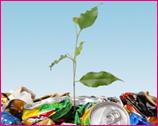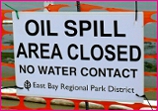Posted on July 19th, 2010 by ASEE
 This lesson helps students understand how a submarine controls its buoyancy through the use of ballasts. Students construct a model ballast system, and then learn to control its vent valves to make it submerge and surface.
This lesson helps students understand how a submarine controls its buoyancy through the use of ballasts. Students construct a model ballast system, and then learn to control its vent valves to make it submerge and surface.
Read More
Filed under: Grades 6-8, Grades 9-12, Lesson Plans | 1 Comment »
Tags: Grade 7-12, Lesson Plan, Marine engineering, Nautical Engineering, Ocean, Underwater Robot
Posted on July 5th, 2010 by ASEE
 The egg drop is a fun and dramatic way to get students involved in engineering design. After a discussion of safety features, students experiment packaging an egg to produce a design that will allow it to fall from a considerable height without cracking.
The egg drop is a fun and dramatic way to get students involved in engineering design. After a discussion of safety features, students experiment packaging an egg to produce a design that will allow it to fall from a considerable height without cracking.
Read More
Filed under: Grades 6-8, Grades 9-12, Lesson Plans | 2 Comments »
Tags: Engineering Design, Grades 5-12, Lesson Plan, Packaging Engineering, Physical Science, Physics, Safety engineering
Posted on June 21st, 2010 by ASEE
 If you’re fortunate enough to live near a beach or sandy banks or dunes, this sand-castle construction lesson from the Great Sand Dunes National Park and Preserve will both instruct and entertain, helping your students understand the cohesive force of water tension and the adhesive force of capillary action.
If you’re fortunate enough to live near a beach or sandy banks or dunes, this sand-castle construction lesson from the Great Sand Dunes National Park and Preserve will both instruct and entertain, helping your students understand the cohesive force of water tension and the adhesive force of capillary action.
Read More
Filed under: Grades 6-8, Grades 6-8, Grades K-5, Grades K-5, K-12 Outreach Programs, Lesson Plans | 1 Comment »
Tags: capillary action, Chemical Engineering, erosion, Grades 3-8, Great Sand Dunes National Park, Lesson Plan, sand and water, Water
Posted on June 7th, 2010 by ASEE
 In this lesson from the California Academy of Sciences, students study the effects of pollution upon human health and consider how we can protect ourselves from the effects of carginogens. They build a lung model to learn how their lungs and diaphragm work to make them breathe. The lesson features a demonstration on how incomplete combustion of fossil fuels releases particles into the air that can harm humans.
In this lesson from the California Academy of Sciences, students study the effects of pollution upon human health and consider how we can protect ourselves from the effects of carginogens. They build a lung model to learn how their lungs and diaphragm work to make them breathe. The lesson features a demonstration on how incomplete combustion of fossil fuels releases particles into the air that can harm humans.
Read More
Filed under: Grades 6-8, Grades 9-12, Lesson Plans | Comments Off on Lesson: Pollution and Lung Health
Tags: Environmental science, Human Body, Pollution
Posted on June 7th, 2010 by ASEE
 This simple lesson from The Works Museum in Minnesota consists of two activities that introduce elementary school students to the engineering design process. Students first work through a chart detailing the steps of the design process and then use the steps to consider ways to solve one of three problems: rescuing a trapped kitten, devising a way to water plants while on vacation, and rigging up a remote light switch.
This simple lesson from The Works Museum in Minnesota consists of two activities that introduce elementary school students to the engineering design process. Students first work through a chart detailing the steps of the design process and then use the steps to consider ways to solve one of three problems: rescuing a trapped kitten, devising a way to water plants while on vacation, and rigging up a remote light switch.
Read More
Filed under: Class Activities, Grades 6-8, Grades 6-8, Grades K-5, Grades K-5, Lesson Plans | 1 Comment »
Tags: Engineering Design Process, Grades 4 - 8, The Works museum
Posted on May 24th, 2010 by ASEE
 Student teams use the engineering design process to create a useful product of their choice out of recyclable items and “trash.” The class is given a “landfill” of reusable items and allowed a limited amount of bonding materials. The activity addresses the importance of reuse and encourages students to look at ways they can reuse items they would normally throw away. Students are further prompted to consider the problems with growing landfills, and efforts by engineers and others to reduce pollution, emissions, and trash production.
Student teams use the engineering design process to create a useful product of their choice out of recyclable items and “trash.” The class is given a “landfill” of reusable items and allowed a limited amount of bonding materials. The activity addresses the importance of reuse and encourages students to look at ways they can reuse items they would normally throw away. Students are further prompted to consider the problems with growing landfills, and efforts by engineers and others to reduce pollution, emissions, and trash production.
Read More
Filed under: Grades 6-8, Lesson Plans | 1 Comment »
Tags: Engineering Design Process, Environmental Engineering, Environmental science, Grades 6-8, Recycling, Trash
Posted on May 10th, 2010 by ASEE
 In this lesson, students in grades 3-12 work in teams to analyze an “oil spill” in the classroom, then design, build, and test a system to first contain, and then remove the oil from the water. Students select from everyday items to build their oil containment and clean-up systems, evaluate the effectiveness of their solution and those of other teams, and present their findings to the class.
In this lesson, students in grades 3-12 work in teams to analyze an “oil spill” in the classroom, then design, build, and test a system to first contain, and then remove the oil from the water. Students select from everyday items to build their oil containment and clean-up systems, evaluate the effectiveness of their solution and those of other teams, and present their findings to the class.
Read More
Filed under: Grades 6-8, Grades 9-12, Grades K-5, Lesson Plans | 3 Comments »
Tags: Energy and Environmental Technology, Environmental Engineering, Environmental science, Grades 3-12, Ocean
Posted on April 12th, 2010 by ASEE
 In this activity, students determine the path traveled by sound waves as they reflect from room surfaces and the time it takes to travel each path. Assuming the role of acoustic engineers, students gain an overview of sound mechanics that involves rate calculations, working with number systems, and a bit of geometry.
In this activity, students determine the path traveled by sound waves as they reflect from room surfaces and the time it takes to travel each path. Assuming the role of acoustic engineers, students gain an overview of sound mechanics that involves rate calculations, working with number systems, and a bit of geometry.
Read More
Filed under: Grades 6-8, Grades 9-12, Lesson Plans | 3 Comments »
Tags: Audio engineering, Music engineering
Posted on April 5th, 2010 by ASEE
 Who hasn’t been frustrated by hard-to-open, clumsy containers?
Who hasn’t been frustrated by hard-to-open, clumsy containers?
Assuming the role of engineers, students learn about the design process and examine the packaging of everyday products. They then analyze a specific product and devise a better design, producing a written report that recommends helpful changes.
Read More
Filed under: Grades 6-8, Grades 9-12, Lesson Plans | 1 Comment »
Tags: Design, Engineering Design Process, Industrial engineering, package design
 This lesson helps students understand how a submarine controls its buoyancy through the use of ballasts. Students construct a model ballast system, and then learn to control its vent valves to make it submerge and surface.
This lesson helps students understand how a submarine controls its buoyancy through the use of ballasts. Students construct a model ballast system, and then learn to control its vent valves to make it submerge and surface.








 The egg drop is a fun and dramatic way to get students involved in engineering design. After a discussion of safety features, students experiment packaging an egg to produce a design that will allow it to fall from a considerable height without cracking.
The egg drop is a fun and dramatic way to get students involved in engineering design. After a discussion of safety features, students experiment packaging an egg to produce a design that will allow it to fall from a considerable height without cracking. If you’re fortunate enough to live near a beach or sandy banks or dunes, this sand-castle construction lesson from the Great Sand Dunes National Park and Preserve will both instruct and entertain, helping your students understand the cohesive force of water tension and the adhesive force of capillary action.
If you’re fortunate enough to live near a beach or sandy banks or dunes, this sand-castle construction lesson from the Great Sand Dunes National Park and Preserve will both instruct and entertain, helping your students understand the cohesive force of water tension and the adhesive force of capillary action. In this lesson from the California Academy of Sciences, students study the effects of pollution upon human health and consider how we can protect ourselves from the effects of carginogens. They build a lung model to learn how their lungs and diaphragm work to make them breathe. The lesson features a demonstration on how incomplete combustion of fossil fuels releases particles into the air that can harm humans.
In this lesson from the California Academy of Sciences, students study the effects of pollution upon human health and consider how we can protect ourselves from the effects of carginogens. They build a lung model to learn how their lungs and diaphragm work to make them breathe. The lesson features a demonstration on how incomplete combustion of fossil fuels releases particles into the air that can harm humans. This simple lesson from The Works Museum in Minnesota consists of two activities that introduce elementary school students to the engineering design process. Students first work through a chart detailing the steps of the design process and then use the steps to consider ways to solve one of three problems: rescuing a trapped kitten, devising a way to water plants while on vacation, and rigging up a remote light switch.
This simple lesson from The Works Museum in Minnesota consists of two activities that introduce elementary school students to the engineering design process. Students first work through a chart detailing the steps of the design process and then use the steps to consider ways to solve one of three problems: rescuing a trapped kitten, devising a way to water plants while on vacation, and rigging up a remote light switch. Student teams use the engineering design process to create a useful product of their choice out of recyclable items and “trash.” The class is given a “landfill” of reusable items and allowed a limited amount of bonding materials. The activity addresses the importance of reuse and encourages students to look at ways they can reuse items they would normally throw away. Students are further prompted to consider the problems with growing landfills, and efforts by engineers and others to reduce pollution, emissions, and trash production.
Student teams use the engineering design process to create a useful product of their choice out of recyclable items and “trash.” The class is given a “landfill” of reusable items and allowed a limited amount of bonding materials. The activity addresses the importance of reuse and encourages students to look at ways they can reuse items they would normally throw away. Students are further prompted to consider the problems with growing landfills, and efforts by engineers and others to reduce pollution, emissions, and trash production. In this lesson, students in grades 3-12 work in teams to analyze an “oil spill” in the classroom, then design, build, and test a system to first contain, and then remove the oil from the water. Students select from everyday items to build their oil containment and clean-up systems, evaluate the effectiveness of their solution and those of other teams, and present their findings to the class.
In this lesson, students in grades 3-12 work in teams to analyze an “oil spill” in the classroom, then design, build, and test a system to first contain, and then remove the oil from the water. Students select from everyday items to build their oil containment and clean-up systems, evaluate the effectiveness of their solution and those of other teams, and present their findings to the class. In this activity, students determine the path traveled by sound waves as they reflect from room surfaces and the time it takes to travel each path. Assuming the role of acoustic engineers, students gain an overview of sound mechanics that involves rate calculations, working with number systems, and a bit of geometry.
In this activity, students determine the path traveled by sound waves as they reflect from room surfaces and the time it takes to travel each path. Assuming the role of acoustic engineers, students gain an overview of sound mechanics that involves rate calculations, working with number systems, and a bit of geometry. Who hasn’t been frustrated by hard-to-open, clumsy containers?
Who hasn’t been frustrated by hard-to-open, clumsy containers?